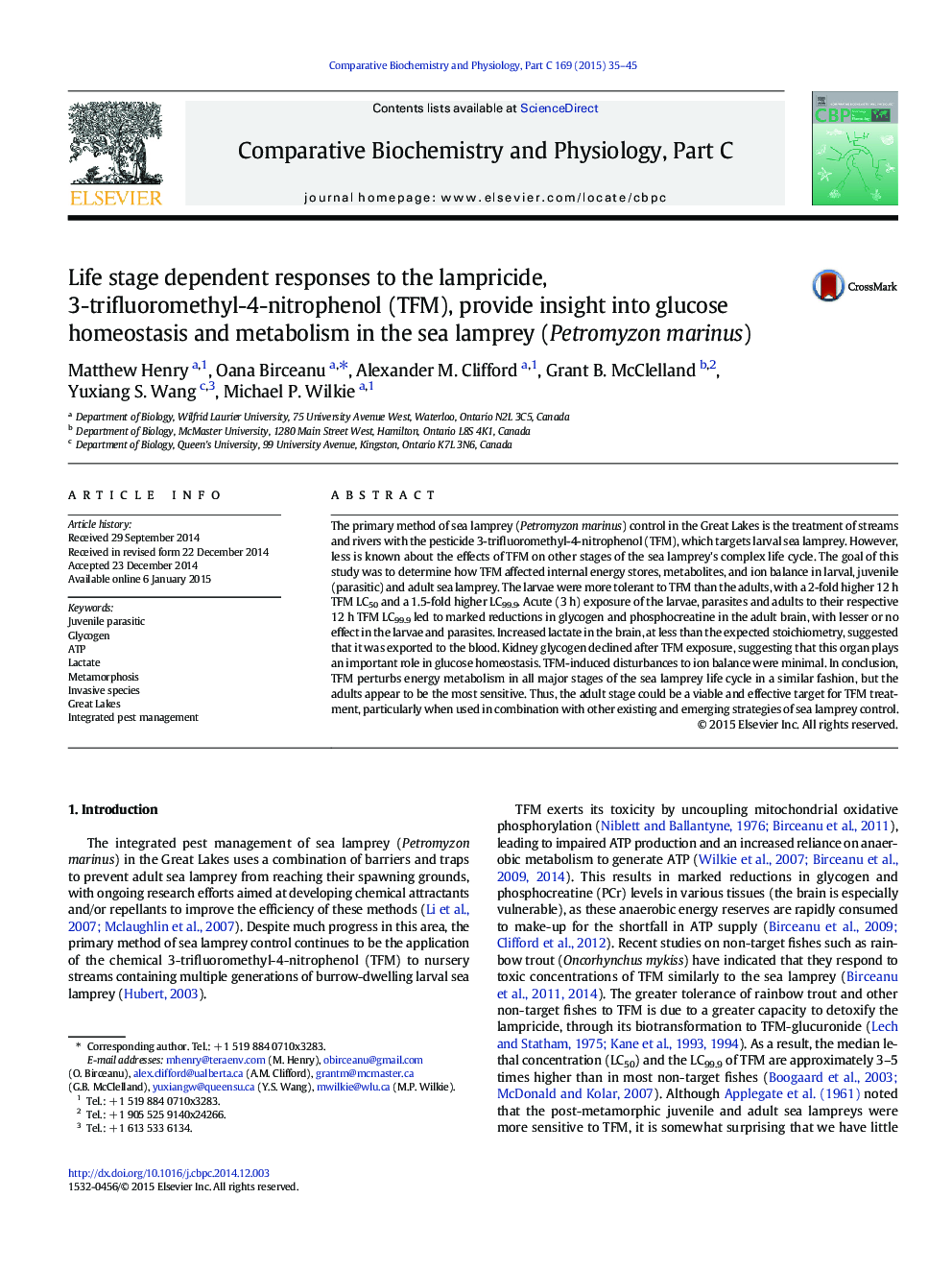| کد مقاله | کد نشریه | سال انتشار | مقاله انگلیسی | نسخه تمام متن |
|---|---|---|---|---|
| 1977245 | 1539287 | 2015 | 11 صفحه PDF | دانلود رایگان |

The primary method of sea lamprey (Petromyzon marinus) control in the Great Lakes is the treatment of streams and rivers with the pesticide 3-trifluoromethyl-4-nitrophenol (TFM), which targets larval sea lamprey. However, less is known about the effects of TFM on other stages of the sea lamprey's complex life cycle. The goal of this study was to determine how TFM affected internal energy stores, metabolites, and ion balance in larval, juvenile (parasitic) and adult sea lamprey. The larvae were more tolerant to TFM than the adults, with a 2-fold higher 12 h TFM LC50 and a 1.5-fold higher LC99.9. Acute (3 h) exposure of the larvae, parasites and adults to their respective 12 h TFM LC99.9 led to marked reductions in glycogen and phosphocreatine in the adult brain, with lesser or no effect in the larvae and parasites. Increased lactate in the brain, at less than the expected stoichiometry, suggested that it was exported to the blood. Kidney glycogen declined after TFM exposure, suggesting that this organ plays an important role in glucose homeostasis. TFM-induced disturbances to ion balance were minimal. In conclusion, TFM perturbs energy metabolism in all major stages of the sea lamprey life cycle in a similar fashion, but the adults appear to be the most sensitive. Thus, the adult stage could be a viable and effective target for TFM treatment, particularly when used in combination with other existing and emerging strategies of sea lamprey control.
Journal: Comparative Biochemistry and Physiology Part C: Toxicology & Pharmacology - Volume 169, March 2015, Pages 35–45